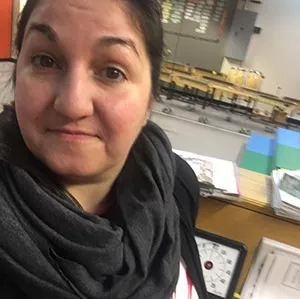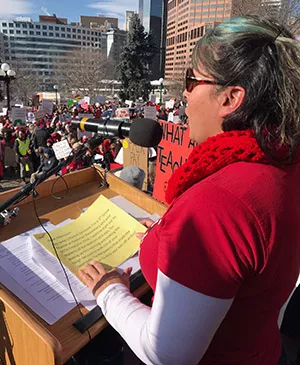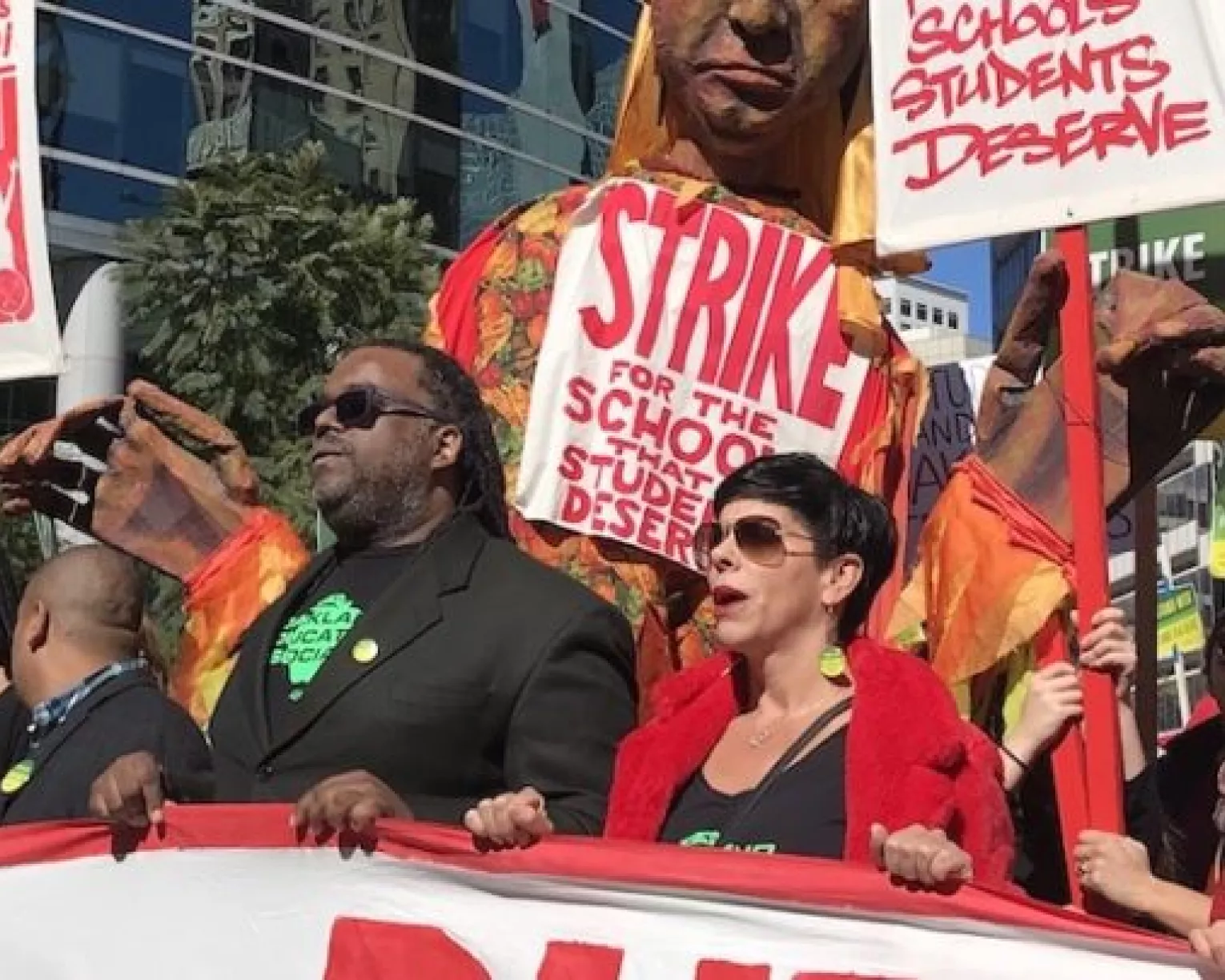(Image by Marka 27 for NEA's 2020 census campaign)
Music teacher Yolanda Calderón had just five minutes on Monday to enter her school and get what she needed. What was the one thing she went in for? “My iPad!” says Calderón, because it has the app and information she needs to communicate with her students’ families directly.

She teaches at Wheeling Elementary in Aurora, Colo., but she hasn't been there since Gov. Jared Polis closed schools on March 25 to slow the spread of the COVID-19 virus.
Among the most critical messages she needed to send the parents of her students via the ClassDoJo app: “Don't forget to fill out the U.S. Census!” She’d been planning to host a census information booth at an event that had been cancelled. Now she needs to connect with the parents online to encourage them to participate.
Educators have a long proud history of supporting the important work of the United States Census, through both classroom lessons and advocacy work in undercounted communities. The census is crucial to direct over $1.5 trillion in federal funds to communities nationwide, and to ensure full political representation in our democracy.
But COVID-19 has presented a new barrier to advocacy that typically involves face-to-face conversations and community gatherings. The pandemic has shuttered schools around the country and cancelled countless events and school-based projects meant to inform, encourage, and help families to fill out the census.
Despite this unprecedented challenge, many educators who were engaged in community organizing around the census refuse to let up now. The stakes are too high—tens of billions of dollars for education are allocated based on census data.
Breaking Down Barriers
Educators know that too many families don’t get counted, because they are unsure of how to fill out the census form, or how the information will be used if they do.

“At my school we serve a high refugee, high immigrant population,” says Calderón, who is also vice president of the Aurora Education Association. Some of the parents “are very wary of any interaction with anyone adjacent to the government,” she says, particularly given the anti-immigrant positions of the current administration.
Rachel Sandoval, Calderón’s friend and fellow census advocate, teaches third- and fourth-grade math and science at Godsman Elementary School in southwest Denver. Only about 30 percent of residents in her area were counted in the 2010 census, which meant that Colorado missed out on billions of dollars the public schools need.
Nationally, the 2010 census missed 10 percent of children under the age of five—that's 2 million kids. Even adults who are comfortable with the census and count everyone else correctly sometimes don't include infants and toddlers.
Sandoval made it her mission to try to improve this year's count in her local area.
“I was planning to hold a census party at school. We were going to have dinner and laptops so people could take the census right there, with representatives from the census bureau to answer people's questions,” says Sandoval.
But that event was cancelled, along with her scheduled appearance on a local T.V. news program to explain the relationship between the census and school funding.
Still, as a teacher and advocate who has worked within the local community since 2006, she wants to do what she can from home to keep talking to families about the census. She plans to reach out via the app Remind, which her entire school community already uses, as well as on social media.
“We’ve seen so much fear with this administration,” says Sandoval, “and it’s made our work around the census that much harder.” She understands their fears on a deeply personal level.
Her father was an immigrant who once worked in the fields of California picking strawberries. She still remembers hearing screams and seeing people run when the green truck from Immigration and Customs Enforcement would roll through.
“As a teacher, people really trust me. When I can reassure them that the information they provide can’t be shared, that it’s the law, their apprehension usually comes down,” says Sandoval.
The pair also co-wrote an article for the Colorado Education Association's member publication, CEA Journal, to make sure their peers know that an accurate census count is critical for adequately funding public schools and other community needs.
Searching for Workarounds
Census advocates like Calderón and Sandoval are determined to use technology and creativity to keep getting the word out.
What else can educators do? We asked for additional suggestions, and here’s what educators around the country had to say:
With so many of us working remotely with students why not use Zoom or Google Meeting (hangouts)? That way there would be the visual of showing the flyers to your class and the lessons can be shared live. —Gayle Sweeney, paraprofessional, Merrimack Valley School District, New Hampshire
I will post on my Google classroom that the children should sit with their mom or dad and complete the census together. I will motivate them with extra credit if they send me a picture of the "You have completed the 2020 Census" screen when they finish. —Teresa Mola, teacher, Paterson Public Schools, New Jersey
Flyers should be handed out with the food that families are picking up at their schools or places of worship.
—Lynn Garcia, Buffalo City School District, New YorkWe are delivering close to 1,600 meals (breakfast and lunch) a day in our district using bus runs and pick-up sites. Consider printing a sticker to apply to the bag, sandwich, veggie container, etc., encouraging census participation. The message can relate to how this meal is part of a count...because YOU were counted (or something along those lines). —Suzanne Goulet, high school art teacher, Waterville Public Schools, Maine
Educators can share NEA’s digital graphics on social media, and we can share them with our families. For families without digital access, physical flyers could be placed in meal bags, delivered daily by our bus drivers! —Laura Chappel, teacher, Lake Tahoe Unified School District, California
We had a presentation in my classroom before we were quarantined. So now I'm going to share the census student presentation in my Google classroom and have the students watch it with their parents as an assignment. Once they watch it, they will create a PSA in the flipgrid. Extra love will be given for the families that share their census participation. —Yulil Alonso-Garza, teacher, Calexico Unified School District, California
Make social media posts that can be shared on local association pages, specifically on Facebook and Instagram. Do Tik Tok videos in which NEA leaders challenge each other with dance moves and catchy rhymes about the census. —Nancielle Massone, teacher, Stockton City Unified School District, California
More Resources for Educators
NEA is offering an online 2020 Census Toolkit for Educators where you can access and print our series of We Count! posters and informational flyers in seven different languages. You’ll find social media graphics and lesson plans organized by grade and subject area. There is also a list of partner groups leading community-specific census work—check their sites for a wealth of additional resources.



